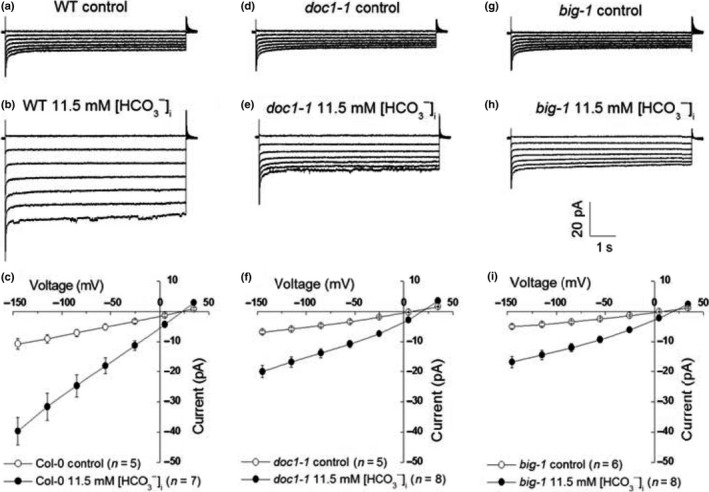Figure 5.

Bicarbonate‐activated S‐type anion currents were suppressed in BIG mutant guard cell protoplasts. (a) Typical recording in wild‐type (WT) guard cell protoplasts without bicarbonate. (b) Typical recording of 11.5 mM [HCO 3 −]i‐activated S‐type anion currents in WT guard cell protoplasts. (c) Average current–voltage relationships of whole‐cell currents as recording in (a) (open circles, n = 5) and (b) (closed circles, n = 7). Error bars represent ± SE. (d) Representative recording in doc1‐1 mutant guard cell protoplasts without bicarbonate added to the pipette solution. (e) Representative whole‐cell current recording in doc1‐1 mutant guard cell protoplasts with 11.5 mM [HCO 3 −]i added to the pipette solution. (f) Average current–voltage relationships of whole‐cell currents as recording in (d) (open circles, n = 5) and (e) (closed circles, n = 8). Error bars represent ± SE. (g) Representative recording in big‐1 mutant guard cell protoplasts without bicarbonate added to the pipette solution. (h) Representative whole‐cell current recording in big‐1 mutant guard cell protoplasts with 11.5 mM [HCO 3 −]i bicarbonate added to the pipette solution. (i) Average current–voltage relationships of whole‐cell currents as recording in (g) (open circles, n = 6) and (h) (closed circles, n = 8). Error bars represent ± SE.
